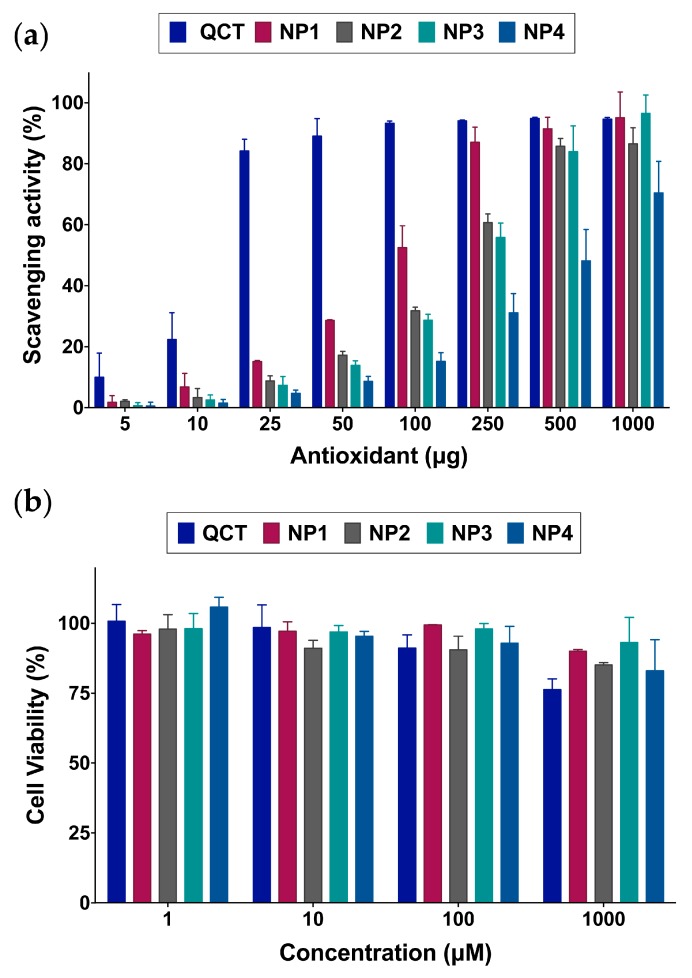Figure 5.
(a) 2,2-diphenyl-1-picrylhydrazyl (DPPH) radical scavenging activity of the NPs compared to QCT indicating a gradual decrease in antioxidant activity as the ratio of NaIO4 is increased from 1 to 4, with NP1 exhibiting the greatest activity after QCT; (b) Viability of human dermal fibroblasts treated with various concentrations of the NPs up to 72 h. QCT NPs are well tolerated by the cells up to 1000 μM. QCT started to exhibit a decrease in cell viability at 1000 μM, attributed to its inhibitory effect on fibroblast differentiation and proliferation.

